When I first started SavvyRevenue, I actually thought a blog post on how to start Google Ads campaigns to a brand new ecommerce store wouldn’t be necessary.
Our target market is mid-to-large eCommerce stores. Surely they’d all be running Google Ads at the time they thought of talking with us.
Boy, was I wrong.
Yes, the majority of the eCommerce stores we talk to already have Google Ads campaigns, but I’ve been caught off guard by how many don’t have an Google Ads account and therefore are interested in learning how to get started in Google Ads from scratch.
In this blog post, you’ll learn how to build the right foundation, what you need to get started in Google Ads, and what you should avoid.
This is not a post about how to find keywords or how many ads you should write. We’ve covered this in other blog posts.
This post is about whether you should start Search or Shopping campaigns first.
It’s about how to eliminate variables beyond your control when starting Google Ads campaigns. We barely get into keywords and ads.
This is a different kind of post that I’m sure most current advertisers will enjoy reading.
One brief note: This is not exactly how we do it in SavvyRevenue. It resembles a lot the various approach we take, but it’s a simplified approach meant to serve as a guide for people with less PPC experience than us. You should look at your own situation and see how your skill level can take it further.
First – A Quick Filter: Should You Even Be Advertising With Google Ads?
Google Ads Search campaigns are about capturing the demand currently in the market. When a consumer searches for a product you offer, you can take advantage of that demand by placing ads in Google Ads.
The big but in Google Ads is “What if there are no searches for my products?” This can make it very difficult to be successful with Google Ads.
A great example is if you’re selling a “concept” instead of actual products. I label concepts as businesses trying to bring something new to the market. It could be the whole craze about subscription eCommerce where you subscribe to receive a lot of products every month for a low amount of money.
There are two other examples where it is hard to be successful with Google Ads:
Your store has a little bit of everything. You might have 50 categories on your site, but only 1-5 products in every category.
The further up in the buyer’s journey someone is, the less likely it is that they know what they’re going to buy. The research stage is research really just research. If you only have five different couches, then there isn’t much to be done.
Another time to reconsider using Google Ads: when you have a poorly-performing website. The less user-friendly / well-designed your website is, the harder it will be to target TOFU/MOFU consumers (top of funnel, middle of funnel).
Once again, this is because they’re in the research stage. If your website makes it hard for them to research, then they can’t find what they’re looking for.
The Key to Success Is Eliminating Factors for Why Google Ads Shouldn’t Work
When you start a Google Adwords campaign and it doesn’t convert as expected, you need to make changes to the areas you know are the causing low performance.
Therefore, the biggest piece of advice I have for starting new Google Ads campaigns for eCommerce is to eliminate any factor you can control before you start the campaigns.
The more factors you need to test, the more time it will take you to improve your ROAS.
You want to eliminate anything that can be an obstacle to conversion so you have as few factors to optimize as possible.
Some of the factors you should manage before you even start are:
- Categories Not Selling: Initially, only advertise for categories you know are already selling.
- Pricing Not Competitive: Avoid advertising for products where you aren’t within 15% of the average price.
- Keyword Selection: Continuing my keyword research for Google Ads savvy guide, choose keywords most likely to convert to start.
- Ad Messaging: Stick to the basics and write ads that follow a successful framework.
- Conversion Lag: Try to choose products with as low time-to-purchase path as possible.
The first point is a great example. If you start Google Ads campaigns for 10 categories and you’re not hitting performance targets, how do you know whether it’s because you have the wrong ads, keywords, bids, products, or landing pages?
You don’t, and that’s the entire point.
Eliminate any variables like that before you start your campaigns. That way when you need to optimize your campaigns, you can just tweak the 3-4 main areas left.
What’s Your Risk Level? 3 Ways to Start Google Ads Campaigns Based on Your Risk Aversion
Whenever we talk with clients, I like to list our approach in three different categories:
- Slow and steady
- Slow to begin, but once you see traction you give it everything you got
- Blast everything initially and pull back what’s not working
In option a, you’ll lose out on revenue, profits and customers until you build up to the ideal level. You have little no to no risk, however.
In option b, you scale as soon as you see evidence that your site can convert search traffic. You do risk starting a bit too aggressive, and having to move back a bit.
In option c, you don’t care about the initial loss. You know your ROAS will be negative for the first 3-6 months, but it’s more important for you to attack the market, and then make back the profit in the long term.
Target Depends on Your Risk Aversion
If you’re an organization that knows you’ll make it back in the following 12 months and have the cashflow, then you might risk more initially and go with option c.
Most businesses we work with choose option b.
But, if you’re doing it yourself, you might want to go with option a. Don’t risk too much budget as you don’t know what you don’t know. In Savvy, we’ve seen almost all scenarios out there, so we know what to expect and can early turn the right knobs and avoid the waste in option A and B.
The Right Mix Between Search and Shopping Is…
When it comes to starting Google Ads campaigns one of the common choices is to go with Google Shopping first.
The appeal of Shopping is clear. You don’t have to write ads, select keywords, or build the same level of campaign structure as you would with regular Search campaigns.
Google Shopping should, therefore, be a favorite amongst in-house teams.
However the success you’ll see depends heavily on what you’re selling. Google Shopping is amazing for low- to mid-priced items where there is a one product, one search kind of approach.
It is less successful for higher-end products or when there is a lot of selection per “keyword category”. For example, a category that is hard to “start” on Google Shopping is furniture. The buyer’s journey is long, and it can be hard to get the searches right.
This doesn’t mean you can’t find success with furniture and Shopping. Far from it. We have plenty of successful cases. I’d just advise using Search more initially rather than Shopping only.
70% Google Shopping, and 30% Search Campaigns to Start
An approach we typically advocate if you’re starting out is to go with your best-selling categories/brands in Google Shopping, and then start Search campaigns for the categories that are selling well in Google Shopping.
This typically does well when we start from scratch in the retail space.
Your Search Campaign Focus Should Be On High ROAS Elements
When you first start Search campaigns, the focus should be to build a foundation you can scale in the future. Before you can scale, you need to show yourself, and the rest of your company, that there is potential.
Therefore, it’s crucial to understand the different keyword types you can use:
- Top of Funnel (TOFU)
- Middle of Funnel (MOFO)
- Bottom of Funnel (BOFU)
Generally you’ll note that Generic keywords are TOFU, Category and Brand keywords are MOFU and Product keywords are BOFU (see examples of those keywords below).
You should start with BOFU keywords. These keywords represent consumers who have already passed the research stage and know what they want to buy. They’re not trying to find what product to buy. They’re trying to find the best store to buy the product.
These keywords often represent a high ROAS potential, which makes it easy to show early success with Google Ads.
Too often, people start using very generic keywords early on. Using a keyword like lamps because you sell awesome lamps hardly is rarely profitable to begin with.
A Few Small Tips for Starting Campaigns:
- Write three ads promoting a single advantage each
- Avoid one-worded keywords
- Apply a -25% bid modifier to mobile
Focus on Your Best Selling Products for Your Initial Google Shopping Campaigns
As with all advice, this is an “it depends” best practice we’ve seen work. We only do it for clients who want to start with a more careful approach, or if they don’t have the approved budget to be able to advertise for all their products yet.
Just like in your Search campaigns, the name of the game for Google Shopping is to make sure you’re starting your campaigns off strong.
Initially, there are two different levers you can control:
- What products you advertise for
- How you bid for various search term patterns
We will look deeper into these below.
What Products You Advertise For
There are two approaches when it comes to how many products you start advertising for in Google Shopping:
Advertising for 10-25% of your products = you hope the limited products will sell very well by themselves and you can compete.
Advertising for a lot/all of products = you focus on long tail searches at a low cost per click to “ensure” a high ROAS.
There isn’t necessarily a right or wrong approach. Both of the approaches have benefits and disadvantages.
Segment Your Campaign by Search Term Patterns
One of the best strategies for getting more out of Google Shopping is by segmenting your campaign by search terms.
I’ve written an extensive guide to how you can do this here: 3x Your Shopping ROI with Campaign Segmentation, so I won’t dig into the details too much here.
The general idea is you can use campaign priorities and negative keywords to define which search terms should be triggered on a campaign level.
This will give you the ability to bid higher for terms that convert better than others.
Therefore, as you start your Google Shopping campaigns for the first time, focus on the brand campaign initially (if you can / have brands with search volume).
Your brand campaign will, in most cases, convert better than your generic campaign, so allocating your spend to this campaign makes a lot of sense. Note that I didn’t write budget. This is something you control with your bids – not your campaign budgets.
Consider Only Advertising for Your Best Selling Products Initially
If you have +2500 products, then consider segmenting your products and only choose your best sellers initially.
This will ensure that the products your potential customers will see are also your most popular products.
Just make sure you revise this quickly – within three months. Google Shopping campaigns are great for long tail searches, which you will miss if you use this approach.
Targets & Budgets: Aim For Break-Even When You’re Starting Out
Initially, you want to set a ROAS target that allows you to break even when you consider all your expenses.
If you can build custom columns that allow you to calculate your profit levels, then you should definitely do that.
Assume the following:
- 100% loss of all your budget in month one
- 50% loss of all your budget in month two
- 25% loss of all your budget in month three
- Break even in month four
Again, all of this is highly individual and based on your risk aversion. You can start much slower, and build your way up without having the same kind of losses. It’ll just take you much longer to get any significant traction.
The more you spend, the more data you get, and the more you can test. The more you can test, the faster you can improve your performance.
In Savvy, we typically say we’ll lose some money in the first month (50%) but that we should be break even in month 2. It’ll depend on each case, but that’s the overall thinking for brand new accounts. Accounts with history are much different.
Budget Is Very Individual and Impossible to Predict in a Blog Post: But Here’s To Trying
What your budget should be is a really different from advertiser to advertiser.
An advertiser in a very specific niche with a few hundred products can start off much lower than someone trying to compete with highly established players.
Personally, I wouldn’t start a trial in the US with less than $5,000 a month. And that’s an absolute bare minimum (not including fees). This would just be to dip your toes in the water and assess the initial performance. Within month two or three you should be spending $10,000 at least.
But I understand that all of this can be too much for some.
Just don’t think you can spend $1,000 and get an adequate understanding of the performance you can expect. There is a huge difference between how your campaigns perform right out of the gate in their first couple of months versus after they’ve been optimized continuously for 1-2 years.
I’d say the absolute lowest for a brand new, small, bootstrapped US eCommerce business to start Google Ads would be $3,000 for the ads and $1,500 for the agency.
Other countries have their own calculations, depending on search volume size.
Display & YouTube Fits In After You’ve Built a Strong Search Program
I don’t advise starting Display or YouTube right off the bat when you’re in retail.
The big selling point with Google Ads is you’re tapping into the existing demand. You capture consumers who have already indicated they want to buy what you’re offering.
You don’t have the same advantage with display advertising across the Google properties (including YouTube).
This doesn’t include remarketing, which I recommend starting from the get-go.
Just Say No to Dynamic Search Ads, Kids!
There is a solid place in you-know-where for PPC agencies who advise their clients to just set up a Google Shopping and Dynamic Search Ads campaign for as the initial Google Ads strategy.
Unless you’re the smallest of small ecommerce stores, then starting a DSA campaign without having any other Search campaigns will be a massive waste of money.
I’m not the only one saying this.
Dan Gilbert from Brainlabs says the same in his wonderful article: Dynamic Search Ads are for amateurs or superheroes
Whenever I audit an account and see dynamic search ads, I know there is much opportunity to improve performance. A well-managed account will always outperform DSAs because:
- DSAs make bad headlines
- DSAs don’t find the best keywords
- DSAs limit control
- Personalized automation is the way forward
And so does every competent PPC manager I’ve ever met.
Your Dynamic Search Ads campaign is a supplement to your regular Google Search strategy. It’s not a main component, and hence you shouldn’t start your account off with a DSA campaign.
No matter how lazy you feel, going through proper keyword research for your Google Ads campaigns will pay off handsomely.
The main issue I have with Dynamic Search Ads campaigns is the ads. The ads will in most cases not be AS GOOD as the ones you could write yourself.
So when you base your decision on whether lightweight Nike running shoes is a good keyword based on how it performs in your DSA campaign, then you will most likely miss out on a lot of good keywords.
Just say no, kids. Just say no.
Should You Go With an Agency To Begin With?
I like to put eCommerce advertisers that want to start Google Ads in three different buckets:
- Low amount of capital (often bootstrapped)
- Have plenty of capital (through investors or bootstrapped)
- Seasoned in retail/business, but just going online or into Google Ads
I’m incredibly biased writing these recommendations because we are an agency. We rarely see cases where we can’t make Google Ads accounts provide a higher yield even after including our fee (after starting Savvy, I’ve only seen one such case). I think an agency is crucial for most eCommerce stores to maximize their Google Ads potential.
I think most stores can get started with Google Ads themselves. It’s not that hard to be profitable with Google Ads. The hard part is scaling your campaigns, but the initial efforts can often be done in-house if you want to.
Low Capital (Often Bootstrapped)
I advise taking some courses, and getting knowledgeable about Google Ads yourself.
Dip your toes.
Pay for an audit + roadmap if necessary, but you need to get to a basic level of understanding before hiring an agency. Otherwise you risk hiring garbage (yes, garbage) that will cost you more than you’d ever know.
Plenty of Capital (Through Investors or Bootstrapped)
These cases typically want to scale fast, but can’t lose money for too long. Here it really depends on whether you can hire a decent in-house talent to manage your initial SEM efforts for you.
Once you plateau, it makes sense to get an audit/roadmap of your efforts. Once you reach a plateau again, it is worth taking on an agency.
However, if you can’t find an above-average in-house SEM manager (they don’t hang on trees), then going with an agency can save you a lot of not just money, but also in opportunity costs.
Seasoned in Retail, but Just Going Online or into Google Ads
This scenario is perfect for an agency. There will be plenty of popular products/brands at great pricing. Logistics are already ready to go. The business side is sound. All that’s needed are amazing Google Ads campaigns.
In this case, an agency will help you scale incredibly fast.
All Ways Lead To Rome: But You Can Get There On First Class, or Coach. Your Choice!
There are many different ways you can start Google Ads campaigns from scratch. This blog post is a mix of fixes to all the various ways I’ve seen it go wrong throughout my years working in PPC.
If you don’t trust agencies, and don’t have the skills or time internally to run an extensive Google Ads account, then focusing your success on Google Shopping can be a good place to start.
Just know that unless you’re really good, then there is much more you can get out of your campaigns.
Choosing the right path for your brand depends on your individual needs, budget, and expectations. If you’d like to talk more about how your brand can benefit from the expertise of a PPC agency, drop us a line, we’d love to chat.

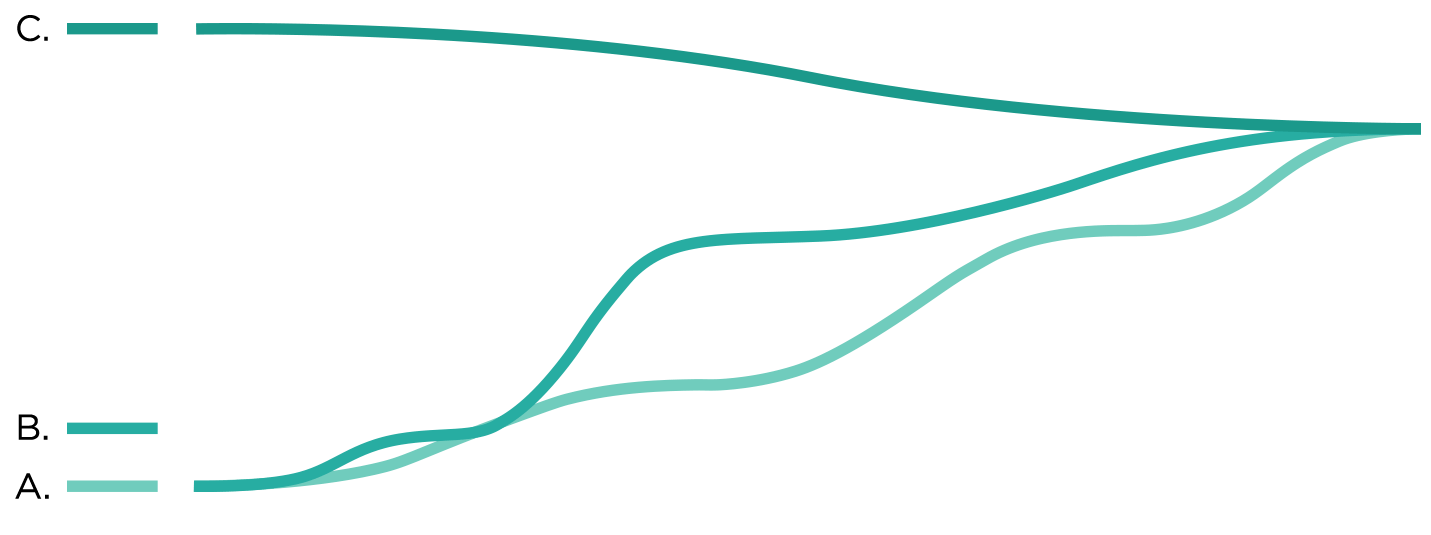
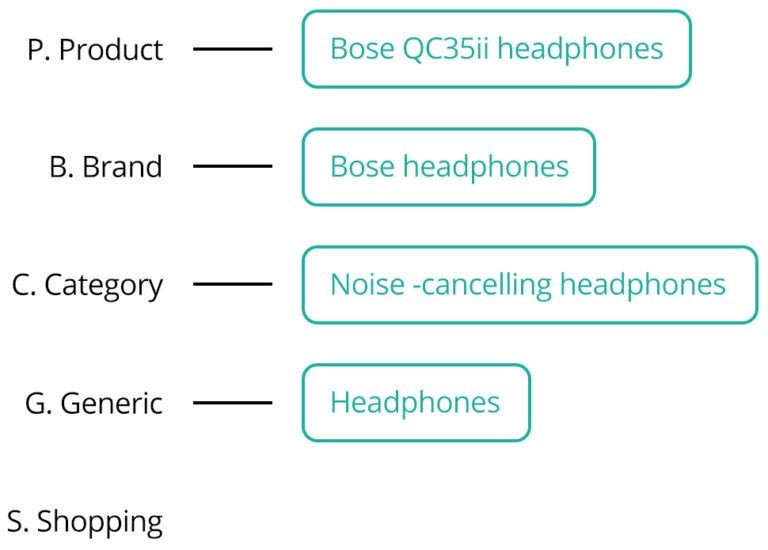
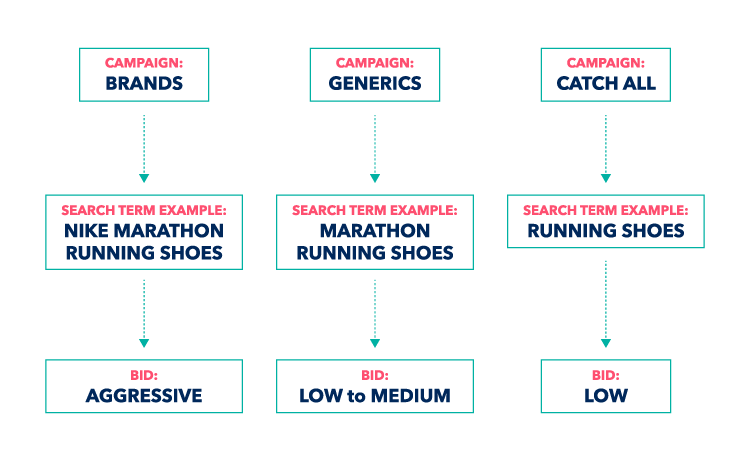

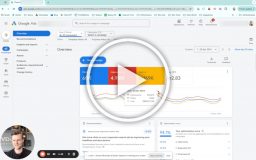


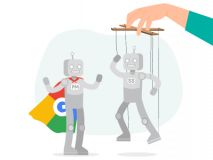

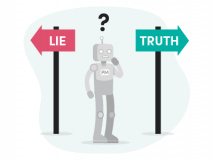
19 thoughts on “How eCommerce Should Start Google Ads Campaigns from Scratch”
Great piece, Andrew. Thanks for sharing.
Just a quick fix I guess: “…Product keywords are TOFU…” should really be BOFU, right?
You’re absolutely right, Stanislav. Hereby updated!
Thanks.
Nice blog! Thanks for sharing it.
Hey Andrew,
Any advice for taking on clients in very saturated markets?
How would your approach differ if Shopping, Facebook, or Search aren’t delivering the results you’d expect?
It’s a good question. A lot will depend on the individual advertiser and market.
The more saturated a market is the more you will have to take a closer look at whether your products are actually competitive.
As an example, I just recently moved to Dallas and I realized the mattress market is one of the most saturated I’ve ever seen. All the beds can the same, look the same and feel the same (we tried one, and have slept in two others). They all feel great.
In those instances, I would put a lot more emphasis on the website design/copy, and ensuring that the pricing match the market.
I would also try to convince my client to run promotions. Seeing that almost all products sell better during promotions, then it would help clarify whether it’s a channel issue or if it’s a product issue. If we still can’t get sales while running a promotion, then it would hint that the product is not what the market is looking for.
However, if we get sales the second that the product is on sale, then the channels we’ve chosen are still good and we can confidently tell the client that they need to review copy, design and pricing on their website.
Now, if this is for a more retail-oriented store (various brands, big selection, etc.) then it’s almost something related to price or UX on the website itself.
—
In both cases, I’d however stick to the overall campaign plan in this blog post. Starting with the areas that I mention will yield the highest ROAS typically. So if you can’t get those working then it’s rare that you can get the more generic keywords, etc. converting better.
Very well written! I had to laugh when you mentioned the “selling lamps on Adwords” example – since that is exactly what I am doing with my shop https://www.gofurnit.de. So I am struggeling with my handmade veneer lamps and don´t know how to set it up correctly. I am, however, bootstrapped and have no budget for an agency right now.
Can you advise me if I should even consider advertising via Adwords with my shop?
Always great when examples strike close to home 🙂
Handmade products are tough on Google Ads unless you have a lot in your selection.
The best way to start would be to:
1) Start with very specific keywords like handmade ceiling lamps, veneer lamps, etc.
Be descriptive in your ads with price, shipping and the product. Make sure the people who click your ad knows exactly what they are going to see.
2) Start a Google Shopping campaign. Exclude keywords fast that appear in your Search Terms report, so you don’t waste budget where you can’t manage it.
Lastly, don’t expect it to be a goldmine. A good marketing funnel is most likely better for your product.
2) Start Google Shopping where you can showcase
Brilliant and wonderful article! Thank you!
I will translate your article into Persian soon and publish it on my blog. (https://www.novin.com/google-ads)
The best way to start with AdWords is to start with very specific keywords.
Thanks for your thorough article!
I like it
Great article Andrew! Love how much value you’re putting out there for free!
Thanks, Pete! Long time no see 🙂
Thanks for sharing such great information. It was really helpful to me. I always search to read the quality content and finally I found this in your post. keep it up!!!!
Thanks for sharing such great information. It was really helpful to me. I always search to read the quality content and finally I found this in your post. keep it up!
Very well written! I had to laugh when you mentioned the “selling lamps on Adwords” example – since that is exactly what I am doing with my shop https://www.gofurnit.de. So I am struggeling with my handmade veneer lamps and don´t know how to set it up correctly. I am, however, bootstrapped and have no budget for an agency right now.
very good
Hello Andrew,
what advice would you give to someone entering a highly saturated market?
In the event that Search, Shopping, or Facebook are not providing the results you expect, how would you approach it differently?
Entering a saturated market requires a lot of patience. The existing players will have solid positions, run long-term campaigns and generally.
We would try to see if we could find a corner of the market that the incumbents are not taking advantage of, build a foundation there and then scale into the “general market”.
It would depend highly on the market, and would be very subjective. Sometimes you just need more patience when going into saturated markets, but at the same time you can massively screw the pooch if you are patient while doing the wrong thing.
Excellent
Thank you for your good post